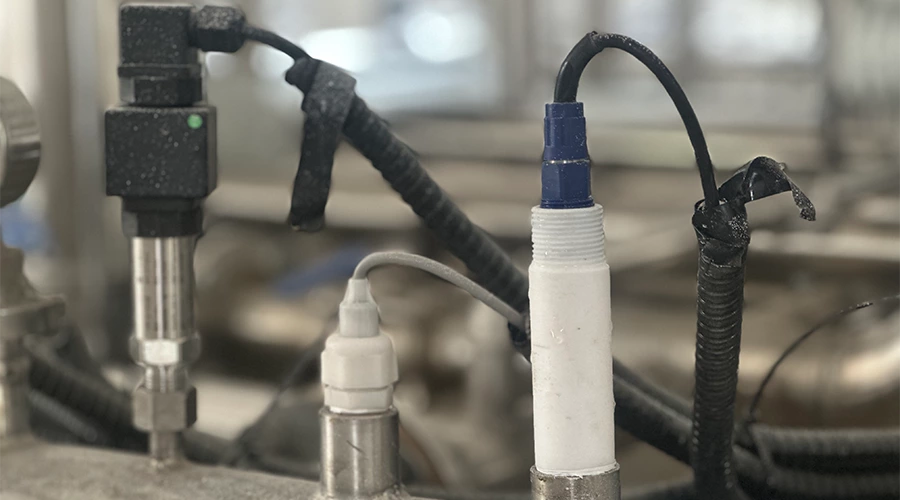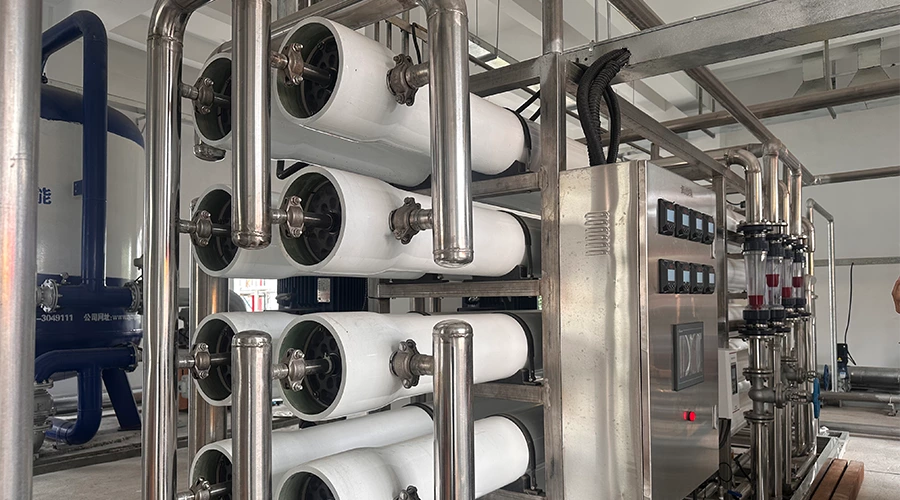Pressure Transmitter Working Principle
Introduction
In the realm of process instrumentation, pressure transmitters play a pivotal role in various industries, ensuring seamless operations and safety. These sophisticated devices convert the mechanical force of pressure into an electrical signal, providing valuable insights into the process conditions. This article delves into the working principle of pressure transmitters, shedding light on their significance and applications.
What is a Pressure Transmitter?
A Pressure Transmitter is a type of sensor device used to measure and convert the pressure of a fluid or gas into an electrical signal. It is commonly employed in various industrial processes and applications to monitor and control pressure levels accurately.
The primary function of a Pressure Transmitter is to sense the pressure exerted by a fluid or gas and then transform this physical quantity into an electric signal that can be easily transmitted and processed by control systems, computers, or display devices. The electrical signal generated by the transmitter is typically in the form of a current (4-20mA) or a voltage (0-10V), which can be proportional to the measured pressure.
Pressure Transmitters are utilized in a wide range of industries, including oil and gas, chemical processing, water treatment, HVAC (heating, ventilation, and air conditioning), and many other industrial applications where precise pressure monitoring and control are essential for efficient and safe operations. They are commonly integrated into control systems, distributed control systems (DCS), and supervisory control and data acquisition (SCADA) systems to automate processes and ensure optimal performance.
The Importance of Pressure Measurement
Pressure measurement is critical in numerous industries, including manufacturing, petrochemicals, pharmaceuticals, and more. It allows engineers and operators to assess the performance of equipment, monitor fluid levels, and ensure optimal process conditions. Pressure transmitters facilitate real-time monitoring, helping prevent system failures and ensuring the safety of personnel.

The Components of a Pressure Transmitter
Sensor Element
At the core of a pressure transmitter lies the sensor element, which directly interacts with the process medium. The choice of sensor element depends on the type of pressure being measured. Common sensor technologies include strain gauges, capacitive sensors, and piezoelectric crystals.
Diaphragm
The diaphragm acts as a flexible membrane that responds to pressure changes. When pressure is exerted on the diaphragm, it undergoes deformation, which is then translated into a proportional force.
Transduction Mechanism
The transduction mechanism converts the mechanical force received from the diaphragm into an electrical signal. This process may involve the use of Wheatstone bridges or piezoelectric materials.
How do Pressure Transmitters Work?
Pressure transmitters operate through a series of well-defined steps:
Sensing Pressure Changes
When pressure is applied to the diaphragm, it undergoes displacement. This deformation is detected by the sensor element, generating a proportional electrical signal.
Signal Conversion
The electrical signal from the sensor element is then processed and converted into an output signal that corresponds to the pressure being measured. This signal can be in analog or digital format.
Output Signal Transmission
The converted signal is transmitted to the control system or data acquisition unit, where it can be displayed, analyzed, or used for process control.

Types of Pressure Transmitters
Pressure transmitters come in various types, each tailored for specific applications:
Absolute Pressure Transmitters
These transmitters measure pressure relative to a perfect vacuum, making them suitable for applications where the ambient pressure needs consideration.
Gauge Pressure Transmitters
Gauge pressure transmitters measure pressure relative to atmospheric pressure, making them ideal for most industrial applications.
Differential Pressure Transmitters
Differential pressure transmitters measure the difference in pressure between two points, enabling flow and level measurements.
Calibration and Accuracy
To maintain the reliability of pressure transmitters, regular calibration is essential. Calibration ensures accuracy and prevents measurement drift over time. High accuracy is crucial, especially in critical applications where even minor deviations can lead to significant consequences.
Applications of Pressure Transmitters
Pressure transmitters find extensive use across various industries, including:
Industrial Automation
In automated processes, pressure transmitters monitor and control pressure to optimize production efficiency and ensure consistent product quality.
Oil and Gas Industry
Pressure transmitters are deployed in oil refineries, wellheads, and pipelines to monitor pressures, detect leaks, and prevent accidents.
Pharmaceutical Applications
In pharmaceutical manufacturing, pressure transmitters contribute to the precise control of chemical reactions, ensuring product integrity and safety.

Benefits of Pressure Transmitters
Improved Safety
Pressure transmitters play a crucial role in ensuring the safety of equipment, processes, and personnel by alerting operators to abnormal pressure levels.
Enhanced Process Efficiency
With real-time pressure monitoring, industries can optimize processes, reduce downtime, and improve overall efficiency.
Predictive Maintenance
Pressure transmitters enable predictive maintenance, as they can identify pressure-related issues before they escalate into major problems.
Common Challenges and Troubleshooting
Pressure transmitters may face challenges such as signal interference, calibration drift, and the influence of environmental factors. Regular maintenance and troubleshooting are necessary to address these issues effectively.
Future Trends in Pressure Transmitter Technology
As technology advances, pressure transmitters are expected to become more compact, energy-efficient, and capable of handling even higher pressures. Additionally, integration with IoT and advanced analytics will revolutionize their applications further.
Conclusion
Pressure transmitters are the backbone of modern process instrumentation. Their ability to convert mechanical pressure into actionable electrical signals drives efficiency, safety, and reliability across diverse industries. Understanding the working principle of pressure transmitters empowers professionals to make informed decisions, safeguard processes, and unlock new avenues of productivity.
FAQs
1. Are pressure transmitters suitable for extreme temperature conditions?
Yes, many pressure transmitters are designed to withstand extreme temperatures and harsh environmental conditions.
2. Can pressure transmitters be used in hygienic applications?
Absolutely! There are pressure transmitters specially designed for hygienic applications in the food and pharmaceutical industries.
3. How often should pressure transmitters be calibrated?
The calibration frequency depends on the application and industry standards. In critical applications, calibration should be done more frequently.
4. Can pressure transmitters measure gases and liquids?
Yes, pressure transmitters can measure both gases and liquids, making them versatile for various industrial processes.
5. Are pressure transmitters compatible with different communication protocols?
Yes, pressure transmitters can support multiple communication protocols, such as HART, Profibus, and Foundation Fieldbus, for seamless integration into different systems.



